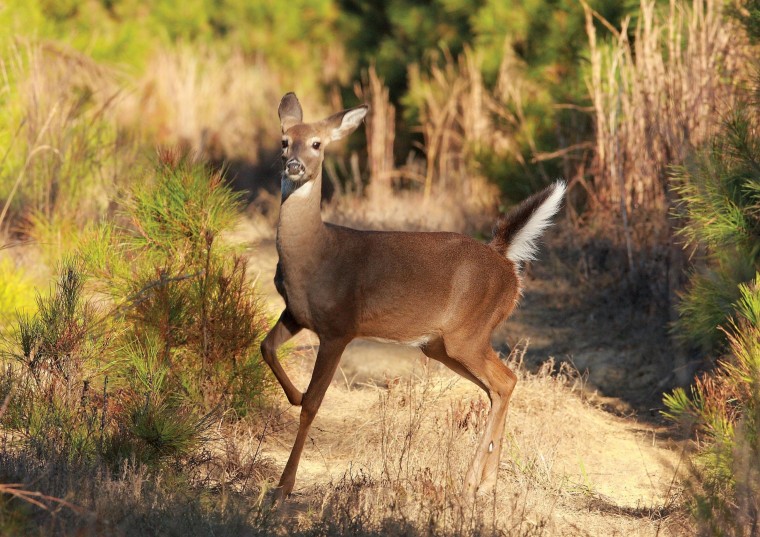White-tailed deer population explodes at Wild Basin
*Editor’s note: This article has been corrected to include additional details from Mitch Robinson, Education and Land Management Coordinator at the Wild Basin Wilderness Preserve.
There are too many Bambis and not enough resources to support them. White-tailed deer populations have exploded in urban areas across the country in recent decades due to human actions, and Central Texas is no exception.
At Wild Basin Wilderness Preserve, a nature preserve in west Austin managed by St. Edward’s University, there are roughly five times more deer than the preserve can support, Education and Land Manager at Wild Basin Mitch Robinson said.
Wild Basin obtained a scientific permit and hired a company, Orion Research and Management, to kill deer for scientific research but is exploring other options, such as contraception.
“We have scientific documentation demonstrating the over-population and their
effects and have a licensed ‘biological service’ to remove them from
Preserve lands,” Robinson said.
From an ecological perspective, killing deer is a humane option because the deer are unhealthy.
“These deer are literally on the brink of death, so many of them are not healthy,” Robinson said. “When the populations are this dense, it’s impossible for them to have a healthy population.”
White-tailed deer overpopulation has been an issue in Central Texas for decades, Robinson said.
“This is a long-term issue within all this part of Central Texas. It doesn’t necessarily have to do with anything that’s changed recently,” Robinson said.
Historically, large predators such as wolves and mountain lions, and a parasite known as the screw fly served as natural population controls to keep deer populations at bay. Large predators lost habitat due to urban growth and the screw fly was intentionally eradicated in the 1960s by researchers at Texas A&M and the University of Texas, Robinson said.
Urban development in Austin isolated small pockets of dense forests, such as the Barton Creek Greenbelt and Wild Basin, ideal habitats for deer.
But food sources are limited in those small areas, and without any natural means of population control, deer populations are growing rapidly. Overpopulation stresses other plant and animal species, as the deer eat some plants, such as the Texas Red Oak, faster than the plants can regenerate.
“Because we have such an overpopulation of deer, there is not a regeneration of oak species,” Robinson said. “Trees are approaching end of their life span … we are really at what is considered the climax of the forest.”
Researchers at Wild Basin are struggling to come up with a solution to curb the deer population down to a stable level, for the sake of the deer as well as other native plants and animals such as the Texas Red Oak.
“The problem is so broad and beyond our reach that it’s not even a financial issue. You couldn’t spend enough money to resolve the issue,” Robinson said.
Instead, the issue is political, according to Robinson. White-tailed deer are protected and managed as a game species by the Texas Parks and Wildlife Department (TPWD), and the state agency relies heavily on revenue from deer hunting licenses, Robinson said.
“From a financial sense, it’s not in their [TPWD’s] best interest to limit the number of deer populations because that would limit their source of revenue,” Robinson said.
Hunting deer to reduce the population at the preserve is not a viable solution because hunting is illegal in urban areas, and Wild Basin is a small 200-acre plot surrounded by neighborhoods in Austin’s Westlake area.
“We don’t know how to approach the situation from a political standpoint,” Robinson said.
Currently, the only loophole is to obtain a scientific permit to remove deer for research reasons, a procedure known as culling.
The preserve hires Orion Research and Management, a licensed biological services company, to carry out culling.
“Orion is about as humane as killing an animal could be. They go out at night and set out corn feeders. They only fire kill shots. [They] only will take a shot if they know they can put a deer down,” Robinson said.
Afterward, Orion donates the meat to the Capitol Area Food Bank, Robinson said.
And since the state government manages white-tailed deer, any changes to policy must be approved by the Texas legislature—including solutions other than hunting.
Robinson said Wild Basin is also exploring other options for lowering the deer population, such as using a contraceptive called Gonacon.







